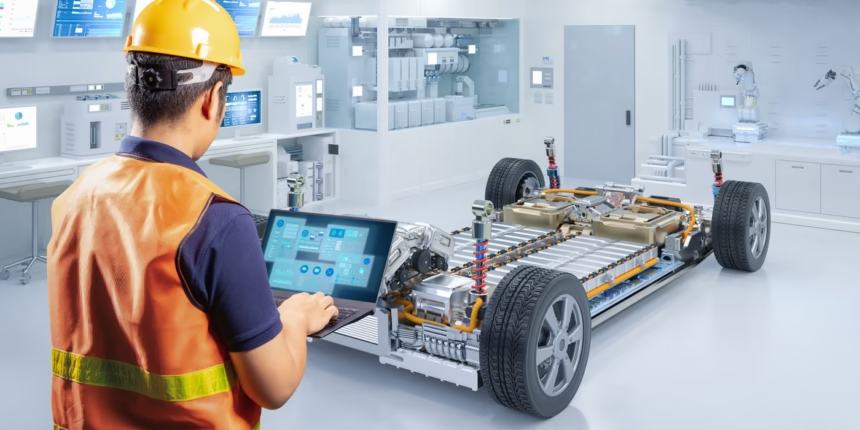Electric vehicles are entering a new phase. As of November 2025, a wave of next-gen electric vehicle battery research is moving from labs into pilot lines and early production. The promise is clear, and it touches what drivers care about most: fast top-ups from 70 to 80 percent in about 12 to 17 minutes, 500-mile range targets, safer packs with better heat tolerance, and lifespans that stretch well past 180,000 miles. Costs can drop too as efficiency climbs and new materials hit scale.
This guide makes sense of the shift. It covers five points that matter: the new chemistries, the real-world benefits, the tough challenges, the likely rollout timeline, and practical buying advice. The term to watch is the next-gen electric vehicle battery, a broad label for lithium-metal, solid-state, sodium-ion, and hybrid designs heading toward the road.
The new chemistries powering the next-gen electric vehicle battery
New chemistries bring new trade-offs. Here is what each type does, why it matters, and which problems it aims to solve.
- Lithium-metal batteries
- What it is: Uses a lithium metal anode instead of graphite to store more energy in less space.
- Why it matters: Higher energy density means longer range or lighter packs.
- What it solves: Targets 500-mile trips and near 70 percent charge in about 12 minutes with liquid electrolytes that suppress dendrites, aiming for lifespans around 185,000 miles or more.
- Pack impact: Smaller and lighter for the same range, improved efficiency, careful cooling needed for fast charging.
- Solid-state batteries
- What it is: Replaces liquid electrolytes with solid materials.
- Why it matters: Safer operation, better energy density, faster charge potential.
- What it solves: Cuts fire risk, raises range by roughly 50 percent, boosts stability under stress.
- Timeline: Limited commercial use could appear from 2026 to 2028 by major automakers.
- Pack impact: Denser, safer modules, simpler cooling in some designs.
- Sodium-ion batteries
- What it is: Uses sodium instead of lithium, with similar cell layouts.
- Why it matters: Lower cost, easier supply, very long cycle life.
- What it solves: Affordable city cars and budget models, grid storage too, reduces reliance on lithium.
- Rollout: Early use in Asia, then export markets.
- Pack impact: Heavier for a given range, but robust and cost effective.
- Quasi-solid and other hybrids
- What it is: Mixes solid and liquid electrolytes for safer, more stable cells.
- Why it matters: Gains in safety and fast charge without waiting for full solid-state scaling.
- What it solves: Bridges the gap between today’s lithium-ion and full solid-state while factories ramp up.
- Pack impact: Improved safety, manageable weight, earlier market entry.
Most of these designs sit in advanced testing or early production. Expect tight supplies at first and premium pricing for the cutting edge.
Lithium-metal batteries explained
Lithium-metal batteries use a thin layer of lithium metal as the anode. That swap removes the graphite host used in common lithium-ion cells, which frees space and weight. The result is higher energy density, the foundation for 500-mile potential without a massive pack.
Fast top-ups are part of the draw. New liquid electrolytes are engineered to guide ions cleanly and prevent dendrites, which are needle-like growths that can pierce the separator. With better electrolytes and careful charging, lab results show near 70 percent in about 12 minutes on high-power hardware. The aim is long life as well, with targets above roughly 185,000 miles.
Today, lithium-metal sits in advanced testing. It is not mass produced for mainstream cars yet, since factories must prove it at scale with consistent quality.
Solid-state batteries near the finish line
Solid-state batteries replace flammable liquid with a solid electrolyte. That step improves safety, since solid layers do not slosh, and they resist thermal runaway better. Solid materials can also allow denser designs, which can lift range by around 50 percent compared with similar-size packs.
Pilot and limited releases are expected between 2026 and 2028 from brands like Toyota and BMW. Early batches will be small, likely tied to higher-end models and trims. Costs remain high at the start, then drop as yield and volume rise.
Sodium-ion for affordable EVs
Sodium-ion trades peak energy for price and durability. Sodium is abundant, and suppliers can draw from wider sources than lithium. The result is a lower-cost pack with strong cycle life, a fit for city cars, ride-hailing fleets, and smaller SUVs where 200 to 250 miles is enough.
Energy density is lower, so packs tend to be heavier for a given range. Still, for urban use and frequent charging, sodium-ion shines. Early availability in China and parts of Asia is likely, with exports to follow in budget segments.
Quasi-solid and other hybrid designs
Quasi-solid cells use a gel-like or partially solid electrolyte to reduce flammability while keeping good ionic flow. That mix can improve fast charge stability and safety without the full production jump to pure solid-state. These designs may appear sooner in select models, giving drivers many of the safety gains while factories build new lines for solid-state.
What drivers gain: faster charging, longer range, safer packs
The lab wins translate into daily perks. Here is what matters behind the wheel.
- Faster charging
Many designs target 70 to 80 percent in roughly 12 to 17 minutes on high-power DC chargers. Charging curves taper near the top to protect the pack, so the first part is fastest. - More range
Targets of 500 miles on one charge are common for lithium-metal and solid-state programs. Denser packs can also deliver the same range with less weight, which helps handling and cargo space. - Safer operation
Solid or stabilized electrolytes cut fire risks and improve heat tolerance. Stability also means more consistent performance in a wider temperature band. - Longer life
Better materials and controlled dendrites improve cycle life. Many programs point to well beyond 180,000 miles in testing. - Cost and sustainability
Sodium-ion can lower pack costs, and higher efficiency reduces resource use per mile. That supports lower total cost of ownership over time.
The bottom line, these gains reduce range anxiety and make charging feel closer to gas refueling in convenience, especially for road trips.
70 to 80 percent charge in about 12 to 17 minutes
Charge time depends on three things: the charger’s power, battery temperature, and the current state of charge. Packs charge fastest when warm and between low to mid states of charge. The charging curve climbs quickly to a peak, then tapers to protect the cell. This is why the first 70 to 80 percent is much faster than the last 20 percent.
If drivers plan to stop earlier and more often, they can save time overall. Preconditioning the battery before a fast charge helps the pack hit its peak rate.
500-mile range and lighter packs
Energy density is the amount of energy a battery holds for its weight or size. Higher density means either more miles in the same footprint or the same miles with a smaller, lighter pack. That helps with towing, since the vehicle has more usable payload. It also helps in cold weather and at highway speeds, where energy use rises and reserves matter.
Denser packs can lower the center of gravity and keep cargo room stable. For many drivers, that change improves everyday feel, from turn-in to braking.
Better safety and longer life
Stable electrolytes reduce flammability, and solid layers can block short circuits more effectively. When dendrites are controlled, cells avoid piercing the separator, which removes a major failure path. Fewer side reactions inside the cell also mean less buildup of unwanted materials, so capacity fades more slowly.
This is the core of longer cycle life. If heat is managed and charging is smart, packs keep more of their original range over time. That protects resale value and lowers total cost of ownership.
The catch: manufacturing, durability, and cold weather performance
Every new battery wins in the lab first, then faces the real world. Here are the main hurdles.
- Scaling up
Moving from hand-built lab cells to auto-grade packs is hard. Yield must rise, quality control must catch tiny defects, and cost per kWh must fall. - Degradation risks
Dendrite growth, electrolyte breakdown, and fast charging stress all hit lifespan. Thermal and software controls help, but materials must carry the load. - Temperature extremes
Performance drops and charging slows in very cold weather, and heat ages batteries faster. Better thermal management is key, yet physics sets limits. - Supply chains
Sourcing lithium metal, advanced separators, and new electrolytes at scale is still building out. Stable supply affects price and delivery times.
From lab to factory at auto-grade quality
Cars need millions of near-identical cells. Small defects can become big problems when hundreds of cells sit together in a module, then modules in a pack. Imagine one weak link in a long string of holiday lights. If it fails, the whole string acts up. Battery makers invest in inspection systems and tight process control to catch flaws early and repeat success thousands of times a day.
Dendrites, fast charging stress, and cycle life
Dendrites are tiny metal spikes that grow inside a cell, especially during aggressive charging. If they reach the opposite electrode, they can short the cell. New electrolytes guide ions cleanly and form protective layers that block dendrites. Even with better chemistry, repeated fast charging adds heat and stress. Smart charging limits, preconditioning, and cooling protect life, but driver habits still matter.
Heat and cold weather realities
Cold slows the motion of ions, so charging takes longer and power drops. Heat speeds reactions that age the cell. Thermal systems warm packs before a charge in winter, and cool packs during high loads in summer. Software predicts needs and adjusts power, yet extreme weather still sets the pace.
When it arrives: 2025 to 2028 rollout and who leads
Expect staged releases rather than a single big bang. Shoppers will likely see the following sequence in showrooms.
- 2025 to 2026
Pilot fleets and demo vehicles with early solid-state or quasi-solid cells, limited volumes, often tied to specific markets. - 2026 to 2028
More solid-state entries in higher trims from major brands like Toyota and BMW, still limited at first, with premium pricing. - Lithium-metal
Advanced testing now, possible entry in select models after initial pilots if safety and cycle life hold up. - Sodium-ion
Likely to scale first in budget EVs and smaller cars, especially in Asia, with exports later as supply stabilizes.
Software updates can improve charging curves and range estimates over time. Specs may vary by region, charge network, and climate.
Solid-state pilot runs in 2026 to 2028
A pilot run is a small production series built on near-final tooling to validate yield, safety, and cost. Volumes are small because each step is measured and tuned. Early releases often land in higher-end trims, where customers expect new tech and can support the price while factories ramp.
Lithium-metal batteries in advanced testing
Lithium-metal programs focus on dendrite control, temperature stability, and consistent fast-charge performance. The numbers look strong, with fast top-ups and long-range targets in play. Before mass production, makers will prove cycle life on automotive duty cycles and confirm safety under abuse tests.
Sodium-ion enters budget EVs in Asia first
Lower costs and long life make sodium-ion a fit for short-range duty. City cars, ride-hailing fleets, and delivery vans benefit from robust daily charging. Longer-range models will likely keep lithium-based chemistries, or use hybrid packs that blend sodium and lithium modules for a balance of range and price.
Buying advice: wait or buy an EV now?
The best choice depends on daily needs and local charging. A clear plan beats hype.
- Buy now if daily driving is under 250 miles, fast chargers are nearby, and current incentives make total cost of ownership attractive.
- Consider waiting if a 500-mile pack or 15-minute charging is essential for regular trips, or if a solid-state model on a shortlist is slated for release in 12 to 24 months.
- Leasing can bridge the gap while next-gen electric vehicle battery tech matures.
- Check battery warranty terms, software update support, preconditioning for fast charging, and thermal management features.
- Plan charging: home Level 2, workplace plugs, or reliable highway networks still matter, even with faster batteries.
If range anxiety is high, set clear needs
List real trip lengths, weather, towing, and charging access. Note the longest regular drive, not a once-a-year outlier. Match those needs to packs available now, then compare upcoming models if a wait makes sense.
Total cost of ownership and warranty tips
Compare fuel, maintenance, tires, and insurance. Electricity costs vary by time of day, so home charging with off-peak rates can save more than public DC fast charging. A strong battery warranty, clear degradation terms, and long software support are key during this transition.
Future-proofing with charging and software
Look for pack preconditioning, battery health tools, and broad DC fast charge support. Over-the-air updates can improve charging curves and efficiency. Good thermal management and smart charging options help preserve battery life.
Conclusion
Five things stand out. First, new chemistries are real, from lithium-metal to solid-state to sodium-ion. Second, benefits are tangible, like 70 to 80 percent charging in about 12 to 17 minutes, 500-mile targets, safer packs, and life well past 180,000 miles. Third, challenges remain in manufacturing, durability, and extreme temperatures. Fourth, timelines look staged, with pilots through 2026 and broader, still limited releases from 2026 to 2028. Fifth, smart buying favors clear needs, strong warranties, and flexible charging plans. The next-gen electric vehicle battery is close, safer, and faster, but wide availability will grow over the next few years. The best move is to match tech timelines to real driving needs, then choose with confidence.
For quick scanning, here is a compact snapshot of what drivers can expect:
| Key Metric | Near-Term Target | Why It Matters |
|---|---|---|
| Fast charge to 70–80% | About 12–17 minutes | Shorter stops on road trips |
| Single-charge range | Up to 500 miles | Fewer stops, less range anxiety |
| Pack safety | Higher heat tolerance | Lower fire risk, more stability |
| Lifespan | 180,000+ miles | Better resale, lower ownership cost |
| Budget tech | Sodium-ion in city cars | Lower price, long life |
Ready to make a move or keep an eye on pilots? Either way, the next few model years will deliver real gains, and the smartest choice is the one that fits daily life best.















